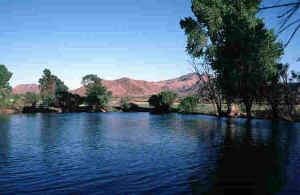| Guides: Algae (fresh) Amphibians (fresh) Arthropods (fresh) Arthropods (land) Birds Fish Mammals Mollusk (marine) Protozoa (fresh) Plankton (fresh) Reptiles |
Understanding the biology of
an area takes careful inventory and observation for many years.
Seasons and weather is an important component on what life can be
found in an area. Even places that are just a few kilometers apart may be very
different. Biological assessment of an
area is a long and tedious process. A base survey just reflects the
diversity, not abundance or specific location within the area under
investigation. If a stream corridor has an abundance of larger
animals, that infers an ecosystem which is supporting itself. The
food web has an internal structure that supports the different layers of
the food pyramid. A complete survey of an area
should include groups like land arthropods, annelids, and other small land
invertebrates. Plants should include aquatic plants, trees, shrubs, other
flower plants, and grasses. Vertebrates should include birds,
mammals, amphibians, and reptiles. Birds usually dominate because in
many wetlands they reflect the top of the food chain. The more birds
documented the richer the food web supporting those animals. Aquatic microorganisms are emphasized because they reflect most accurately the health of the water in which it lives. It can provide clues on the chemical balance of the creek. |
 The
biological observation of the stream, pond, or salt water is probably the
most rewarding to a non-scientist. It involves learning the
vegetation and organisms that live along the creek. It is a
life-long skill to observe and appreciate what nature brings to our
doorstep. Understanding the biological component helps to determine
if restoration was successful or not.
The
biological observation of the stream, pond, or salt water is probably the
most rewarding to a non-scientist. It involves learning the
vegetation and organisms that live along the creek. It is a
life-long skill to observe and appreciate what nature brings to our
doorstep. Understanding the biological component helps to determine
if restoration was successful or not.